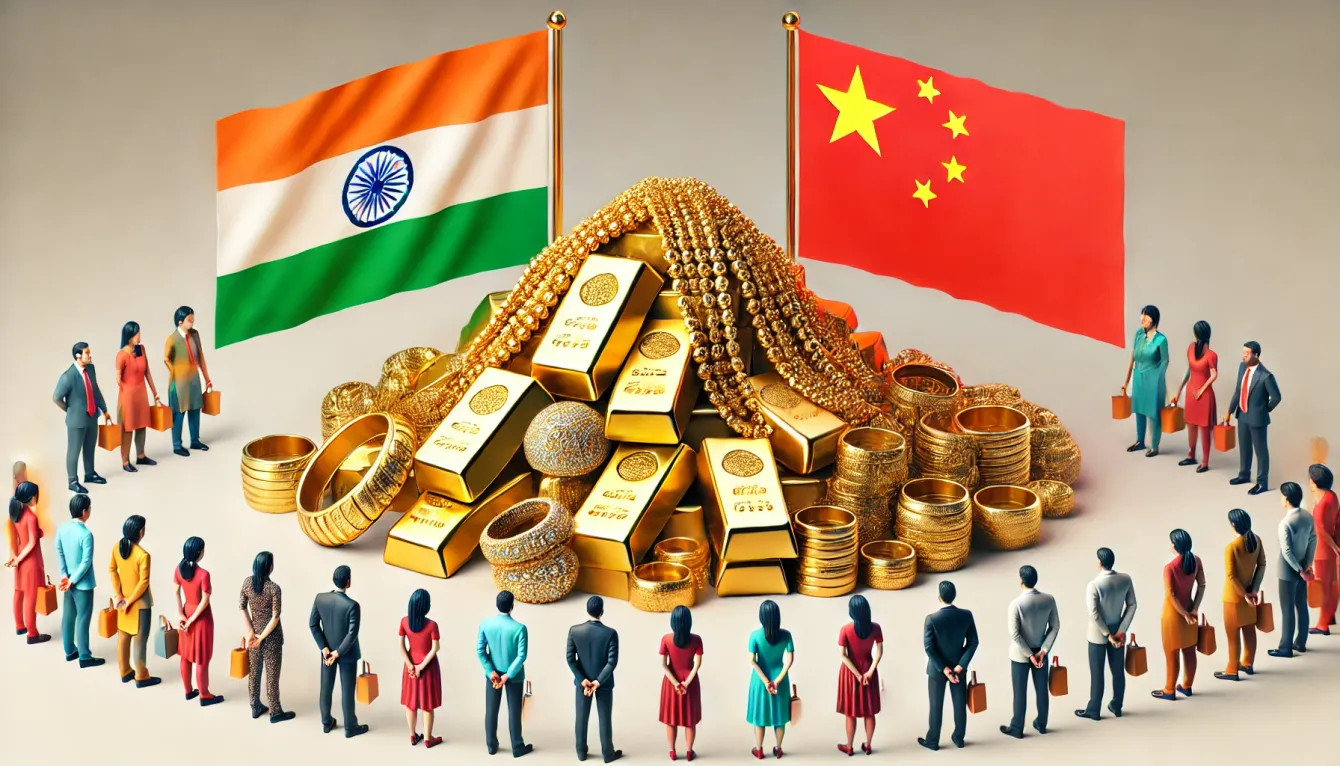
(Kitco News) – While the price of gold continues to rise in every global market, more than ever before, the price action is being driven by Asian buyers and sellers, and by China and India in particular.
India’s domestic gold market is heating up this week, with dealers telling Reuters that gold is now trading at a premium for the first time in five months.
Dealers in the world’s second-biggest bullion market began the week offering a discount of up to $24 per ounce less than official domestic prices, but by Friday, they were charging a $3 premium. Last week, the discount was as high as $80.
“Retail demand started picking up thanks to the Akshaya Tritiya festival, and it got an extra boost as prices came down,” a Mumbai-based dealer with a bullion importing bank told the news agency. Akshaya Tritiya is the second-biggest gold-buying festival in India after Dhanteras, and it was celebrated on Wednesday.
Gold’s sharp pullback from last week’s new all-time high of $3,500 per ounce played a major role in sparking renewed demand in the subcontinent. “Many potential retail buyers were on the sidelines due to (the) price volatility and were waiting for a price correction,” said a Chennai-based bullion dealer. “They would likely make purchases in the coming weeks if prices remain stable.”
And the performance of India’s gold market is all the more impressive in light of the fact that China – the number-one nation for gold consumption – has closed its markets for the Labor Day holiday from May 1-5, removing perhaps the biggest consistent bid beneath global gold prices.
Ole Hansen, Head of Commodity Strategy at Saxo Bank, noted that the China bid in the gold market has “temporarily evaporated, exposing gold to additional downside pressure.”
“The key question now is whether Chinese investors will return next week with the same intensity, or whether price softness during the holiday lull will prompt further long liquidation,” Hansen said in a note on Thursday. “A deeper correction could extend toward the USD 2,950 to 3,000 zone, a psychologically and technically significant area.”
“With the speculative community reducing exposure and Chinese demand on pause, the short-term path for gold hinges on whether Asian buying returns post-holiday,” he added. “Should it fail to re-emerge with conviction, further long liquidation cannot be ruled out.”
Over the past month, the gold market has seen a resurgence of demand from China. Joseph Cavatoni, Senior Market Strategist at the World Gold Council, told Kitco News that preliminary data shows investment flows into Chinese-listed gold-backed exchange-traded funds have hit record highs.
“Eastern investors are back at it now,” he said. “We’ve seen more flows into China in April than we have into the U.S.”
Chinese buyers were very active ahead of the holiday, with dealers charging premiums of $34-$48 per ounce over the international spot price in the first half of the week compared with premiums of $44-$50 per ounce last week.
However, while China remains the biggest market for total gold consumption, new data released this week shows that India has actually surpassed China in one of the most important areas of the market.
According to a report by Zerodha Fund House, India was actually the world’s largest consumer of gold jewelry in 2024, with total consumption reaching 563 tonnes. India’s total gold demand surpassed 800 tonnes in 2024, with the rise in jewelry consumption and increased investments in gold exchange-traded funds (ETFs) the key drivers, Zerodha said.
Indians also invested heavily in gold bars and coins in 2024, with the country purchasing 239 tonnes of gold in bar and coin form, a 60% increase compared to 2023, making India the second-largest investor in gold bars and coins globally.
The report also showed that Indian investors are showing increasing interest in gold ETFs. Over the past five years, gold ETF holdings in India have grown from 21 to 63 tonnes.
And India’s relative gain in the jewelry sector coincided with China’s loss. Gold jewelry demand saw a sharp decline in the mainland, with the World Gold Council noting that the demand of 125 tons represented a five-year low for the first quarter, and was 19 percent below the 10-year quarterly average.
While the dethroning of China as the largest gold jewelry market is definitely related to unprecedentedly high prices, changing consumer tastes have also played an important role.
“An increasing number of consumers in China preferred lighter weight, more affordable items,” said Wang Lixin, regional CEO of the China branch of the World Gold Council.
Liu Yan, vice-president of Yuyuan Jewelry and Fashion Group, said high gold prices have led some consumers to delay purchases until there is a price pullback, or to choose lower-weight gold jewelry.
Deng Ronghua, general manager of Chow Tai King Jewelry, echoed these statements. “In the past, sales were primarily driven by larger gold jewelry items, whereas currently, lighter products are outperforming, with customers typically spending between 2,000 and 3,000 yuan on average,” he said. “Moreover, businesses engaged in gold recycling have achieved favorable outcomes.”
Ernest Hoffman is a Crypto and Market Reporter for Kitco News. He has over 15 years of experience as a writer, editor, broadcaster and producer for media, educational and cultural organizations. Ernest began working in market news in 2007, establishing the broadcast division of CEP News in Montreal, Canada, where he developed the fastest web-based audio news service in the world and produced economic news videos in partnership with MSN and the TMX. He has a Bachelor’s degree Specialization in Journalism from Concordia University. You can reach Ernest at 1-514-670-1339.
Shared by Golden State Mint on GoldenStateMint.com














